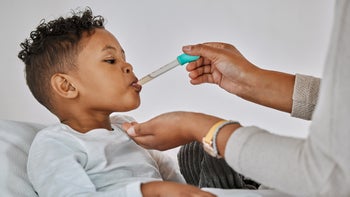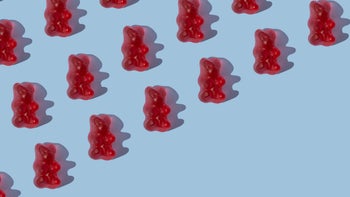
7 Common Treatments to Get Rid of Baby Gas Fast: What Actually Works and What Doesn’t
Key takeaways:
Babies make intestinal gas, and this is normal.
Burping a baby often or changing their position can sometimes help to relieve gas.
If your baby has a lot of gas along with other medical problems like diarrhea or poor weight gain, talk with your healthcare provider.

The cry of a helpless newborn can tug at the heartstrings of caregivers. And it’s common for caregivers to wonder if crying is a sign of gas buildup in a fussy baby. Healthy babies can cry for 1 to 3 hours a day — sometimes for no known reason.
Babies are just like adults, their intestines produce gas during the digestion of food. And it’s not always painful for them. All babies are gassy and all babies cry, but it’s rarely a cause for concern.
It’s normal for infants to strain when they try to pass gas or have a bowel movement. This can give the impression that they’re in pain. They may tense their stomach muscles, make fists, pull up their legs and cry. In most babies, this is a part of normal development as they learn to relax their pelvic floor muscles to pass gas or have a bowel movement.
Search and compare options
But in some cases, finding quick gas relief may help soothe your fussy baby. Let’s take a closer look at common treatments to help a gassy baby and which ones really work.
1. Baby gas drops
Infant simethicone drops (such as Mylicon) are commonly used for gas relief in a crying baby. It works by breaking up gas bubbles in the stomach and intestines. It allows the trapped gas in the stomach to break down, and pass naturally.
But there isn’t clinical evidence that it works to relieve gas symptoms in babies. And in some cases it should be avoided because of possible interactions. Always talk with your medical provider before trying simethicone drops to make sure it’s safe for your baby.
2. Gas-relieving positions
When babies eat, they tend to swallow lots of air, especially with bottle feeding. The swallowed air can become trapped in the stomach and cause a buildup of gas. This can be relieved by:
Keeping your baby propped up during feedings
Taking a feeding break halfway through to try to burp
Trying to burp again at the end of the feeding
Burping after every ounce, if your baby has lots of gas
If you want to try to let out the gas from the other end, try moving their legs. Lie the baby on their back and move their legs in a gentle bicycle motion. You can also try bending their legs, bringing their knees up to the belly. This may help pass some gas or help the child have a bowel movement.
Read more like this
Explore these related articles, suggested for readers like you.
Make sure you avoid inserting anything into their anus to relieve gas — it may cause harm.
3. Baby gas massage
Infant massage has been suggested by parents as a helpful treatment for baby gas, yet there are no studies that have proven it helpful. While it may not help to reduce gas, there are some upsides.
The benefits of infant massage come from the quality time spent together with your baby. Gentle massage and skin-to-skin contact help promote feelings of attachment and love. This is helpful for you and your baby when crying spells may bring on stress and uncertainty.
4. Gripe water
Gripe water is an over-the-counter product sold to relieve the symptoms of colic, gas, and fussiness in babies. It’s a mixture of herbs and water, with the most common ingredients being fennel, ginger, sodium bicarbonate (baking soda), and flavorings.
There has been no evidence that gripe water is helpful in relieving gas pains or stomach upset. And in some cases, it may not be safe to use at all. If you’re considering giving gripe water a try, just make sure you talk with your healthcare provider first.
5. Switching formula
Unless your child has a medical condition or allergy, switching to a soy- or amino-acid-based formula is not likely to help with gassiness. There’s no evidence a specific formula can help with crying or fussiness or to reduce gas in a healthy baby.
That being said, if you’re using a powdered formula, your baby may be swallowing lots of air bubbles created during mixing. Sometimes switching to a ready-to-feed version of that formula may cut down on excess gas. If that’s not an option, you could also try letting your formula sit for a while after mixing so the air bubbles can settle.
6. Baby probiotics
Probiotics are microorganisms used to help restore the balance of bacteria in the gut. While there’s some evidence that probiotics may help in certain conditions, there isn’t enough research to show its benefit in healthy babies.
There’s some concern that probiotics can also increase the risk of infection. While there are supplements and formulas available that have added probiotics, talk with your healthcare provider before using these products in your baby.
7. Dietary changes (if breastfeeding)
It’s commonly believed that what you eat has an effect on your breast milk. And you may find that certain foods cause more gas in your baby. But there’s only limited evidence of a link between your diet and a gassy or fussy baby.
Proper nutrition is important when breastfeeding. If you think certain foods you eat affect your child through your breast milk, you can try removing them from your diet temporarily. If removing a food seems to help, reintroduce it to see if the symptoms return. Permanently eliminating foods from your diet could cause nutrition deficiencies, so talk with your healthcare provider first.
Could your gassy baby have colic?
It’s common to wonder if your crying baby has gas or if it’s colic. Colic is defined as long-lasting episodes of crying for no apparent reason in a healthy, well-fed baby. Signs of colic in a baby will typically include crying episodes that happen:
More than 3 hours a day
More than 3 days a week
For more than 3 weeks
In infants around 3 weeks to 3 months of age
Colic is a harmless condition that resolves with time. But in some cases, prolonged crying can be a sign of another issue. You’ll want to reach out to your medical provider if you have a fussy baby with repeated long-lasting crying spells. They can help to find a cause or reassure you that there’s nothing more serious going on.
When to get medical care for a gassy baby
If the crying, fussiness, and gas are concerning to you, talk with a medical provider. This is especially important if your child has other symptoms like:
Poor weight gain
Rashes
Vomiting
Watery diarrhea
Constipation
Stools with blood or mucus
Lethargy
These symptoms may signal a gastrointestinal issue that could be causing your baby to cry or have excess gas.
The bottom line
Soothing a gassy baby can be tough. The good news is, in most cases gas in a baby is normal and harmless. Changing your baby’s position and burping them frequently can help. Many other common treatments just don’t have much evidence to back them up. Fortunately, gas is usually short-lived and will resolve. If you’re concerned about what may be causing your baby to be gassy or fussy, talk with your healthcare provider.
Why trust our experts?


References
Bennett, C., et al. (2013). Massage for promoting mental and physical health in typically developing infants under the age of six months. Cochrane Database of Systematic Reviews.
Biagioli, E., et al. (2016). Pain‐relieving agents for infantile colic. Cochrane Database of Systematic Reviews.
Familydoctor.org. (2023). Colic.
Healthychildren.org. (2012). Breaking up gas.
Healthychildren.org. (2021). Probiotics in infant formula.
Hill, D. J., et al. (2005). Effect of a low-allergen maternal diet on colic among breastfed infants: A randomized, controlled trial. Pediatrics.
International Foundation for Gastrointestinal Disorders. (n.d.). Infant dyschezia.
MedlinePlus. (2022). Excessive crying in infants.
O’Connor, N. R. (2009). Infant formula. American Family Physician.
Quin, C., et al. (2018). Probiotic supplementation and associated infant gut microbiome and health: A cautionary retrospective clinical comparison. Scientific Reports.





























